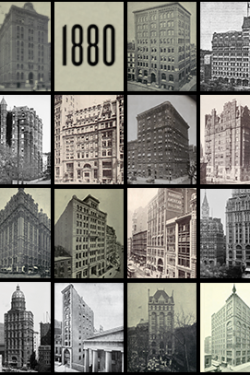Why did some office buildings and apartment houses begin to get taller in the mid-1870s and the early-1880s, respectively? Where did developers build and why? How did corporations design buildings for their needs, as well as for-profit?
Speakers in the first Friday afternoon session will address these and other issues, from the introduction of elevators to telephone technology, as well as the cooperative movement in residential architecture.
Speakers
Carol Willis is the founder, director, and curator of The Skyscraper Museum. She is the author of Form Follows Finance: Skyscrapers and Skylines in New York and Chicago (Princeton Architectural Press, 1995), among other publications. An Adjunct Associate Professor of Urban Studies at Columbia University’s GSAPP, she teaches in the program Shape of Two Cities: New York and Paris.
Robert Balder is the Executive Director of Art, Architecture and Planning at Cornell University.
Lee Gray is Professor of Architectural History in the School of Architecture at UNC Charlotte. An expert on early commercial buildings and elevator history, Lee Gray is the author of From Ascending Rooms to Express Elevators: A History of the Passenger Elevator in the 19th Century (2002). He has written monthly articles on the history of vertical transportation for Elevator World Magazine since 2003. The Tribune Building was a focus of his dissertation, “The Office Building in New York City, 1850-1880” (Ph.D. diss., Cornell Univ., 1993).
Kathryn Holliday is Associate Professor of Architectural History in the School of Architecture at University of Texas Arlington, is an architectural historian focused on American architecture in the 19th and 20th centuries. She is the author of Leopold Eidlitz: Architecture and Idealism in the Gilded Age (W. W. Norton, 2008) and Ralph Walker: Architect of the Century (Rizzoli, 2012). Her current research focuses on the typology of telephone buildings.
Andrew Alpern is an architectural historian, architect, and attorney. An expert on historic apartment houses, he has authored nine books on the subject, including The Dakota: A History of the World’s Best-Known Apartment Building (Princeton Architectural Press, 2015) and Luxury Apartment Houses of Manhattan: An Illustrated History (Dover, 1993). Valuing the history of real estate development, he is the co-author with the late Seymour Durst of Holdouts!: The Buildings That Got in the Way (2011).
